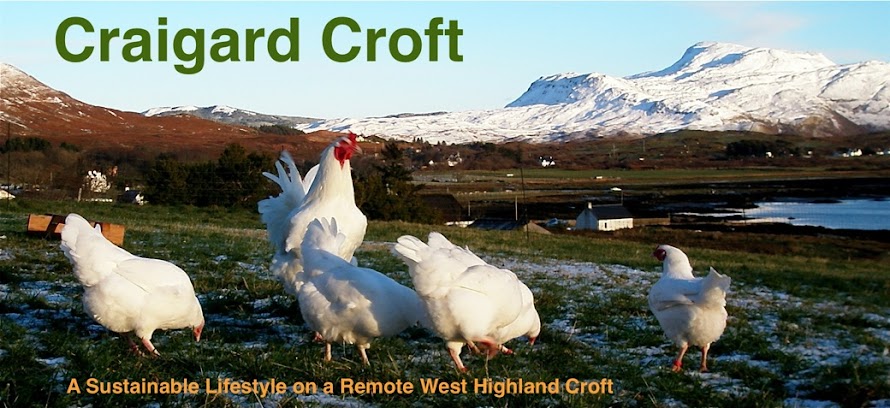When the Highland feudal landowners turfed their tenants out of their homes and off their land in the 19 th century they stopped just short of genocide by providing the dispossessed with strips of poor quality land above high water mark.
These holdings or "crofts" were not large enough to support self-sufficiency so the Crofters had to work for the landowner at starvation wages.
Towards the end of the century Crofters acquired some rights to their holdings. These rights brought obligations; mainly to use the land productively.
We are required to carry out agricultural, horticultural or other productive activities which can also include forestry. Most of us keep sheep which only show a profit when you add the Single Farm Payment or subsidy from the European Union.
People in England voted in June to leave the EU. Here in Scotland we voted 72 % in favour of remaining. but when we do eventually leave we will no longer get the EU farm payment ergo if we keep sheep it will be a loss making enterprise. Sheep will largely disappear from the crofting counties. So what are the alternatives.
Providing tourist facilities is a possibility but we already have three campsites in the village and people looking for B&B want en-suite bathrooms (croft houses are too small and bathrooms are expensive to install). Equestrian enterprises and golf courses are acceptable but both require large amounts of land , management expertise and capital.
Forestry is an alternative as long as you are not looking for a cash income in the next forty years. Of course the best time to plant trees is twenty years ago. Second best is now so I think that the sheep will have to go with their lambs in the Spring and I'll start planting trees this winter.
I'll need a new title for the blog, "Craigard Woodland Croft" perhaps.
 |
| Remnant of wildwood, Glen Affric |
Towards the end of the century Crofters acquired some rights to their holdings. These rights brought obligations; mainly to use the land productively.
We are required to carry out agricultural, horticultural or other productive activities which can also include forestry. Most of us keep sheep which only show a profit when you add the Single Farm Payment or subsidy from the European Union.
People in England voted in June to leave the EU. Here in Scotland we voted 72 % in favour of remaining. but when we do eventually leave we will no longer get the EU farm payment ergo if we keep sheep it will be a loss making enterprise. Sheep will largely disappear from the crofting counties. So what are the alternatives.
Providing tourist facilities is a possibility but we already have three campsites in the village and people looking for B&B want en-suite bathrooms (croft houses are too small and bathrooms are expensive to install). Equestrian enterprises and golf courses are acceptable but both require large amounts of land , management expertise and capital.
Forestry is an alternative as long as you are not looking for a cash income in the next forty years. Of course the best time to plant trees is twenty years ago. Second best is now so I think that the sheep will have to go with their lambs in the Spring and I'll start planting trees this winter.
I'll need a new title for the blog, "Craigard Woodland Croft" perhaps.

1 comment:
The coastal land of poor agricultural quality could be exchanged for economically adequate acreage inland, leaving the seaside scenery to tourism. It seems a more than equitable exchange, and the least the large landowners could do to maintain community and production in Scotland.
I knew there were brutal clearances, my ancestors left Scotland in 1820, but I didn't know how crofts came into existence, thanks for the succinct history lesson.
Post a Comment